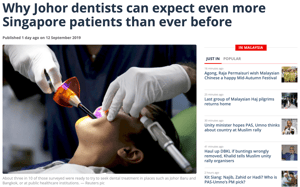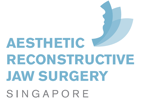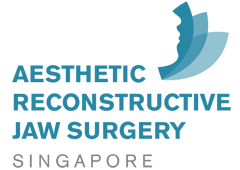Share this
Cost of Dental Care in Singapore
on September 15, 2019
 I was preparing a treatment plan for a patient last night when a Whatsapp message from a colleague came in. He forwarded me a post for Malaymail.com entitled “Why Johor Dentists can expect even more Singapore patients than over before”. And another on Channel News Asia Facebook with a headline saying that “9 out of 10 Singaporeans are concerned about cost of dental care”. This is indeed a reversal of the trend 30 years ago when Europeans came to Singapore as dental tourists; they get their dental work done and have a holiday at the same time and pay a fraction of what they would have to pay if they had done the same work in their home country. Thirty years on, as a developed society, has Singapore Dentistry become like that of Europe?
I was preparing a treatment plan for a patient last night when a Whatsapp message from a colleague came in. He forwarded me a post for Malaymail.com entitled “Why Johor Dentists can expect even more Singapore patients than over before”. And another on Channel News Asia Facebook with a headline saying that “9 out of 10 Singaporeans are concerned about cost of dental care”. This is indeed a reversal of the trend 30 years ago when Europeans came to Singapore as dental tourists; they get their dental work done and have a holiday at the same time and pay a fraction of what they would have to pay if they had done the same work in their home country. Thirty years on, as a developed society, has Singapore Dentistry become like that of Europe?
In tandem with everything else, general costs have gone up. However, in some areas, cost has actually come down. In particular, the cost of dental implants has dropped significantly over the last twenty years, even without factoring in inflation.
The paradoxical fall in cost of dental implant treatment
Twenty years ago, there were only a handful of dental implant brands in Singapore. They were mainly the few top European and American brands. There were also not many dentists providing dental implant services. With limited competition and without economy of scale, dental implant treatment was expensive and only fairly affluent patients can afford it. Most patients have to make do with dentures with their attendant inconveniences and inefficiencies.
Today, the number of patients having dental implants to replace their missing teeth instead of dentures have increased significantly. This is because dental implants are a lot more affordable now. There are several factors that contributed to the falling prices.
Dental implant manufacturers
The number of dental implant manufacturers in the world have increased drastically over the years and many have set up operations in Singapore either directly or through distributors. Naturally, implant manufacturers cannot sell to consumers directly but rather they have to sell their products to dentists. However, only dentists who are trained to perform implant dentistry will buy their products. As such, implant vendors conduct training courses to train dentists to become competent in providing such treatment for their patients. This has drastically increased the number of dentists providing implant dentistry services.
Dentists providing implant dentistry
Historically, most dentists are trained by such vendor-organized courses or are specialists in oral and maxillofacial surgery and specialists in prosthodontics, whose specialty training includes the surgical and prosthodontics aspects of implant dentistry respectively. As demand for training from general dentists increased, universities began providing post graduate diplomas in dental implantology to cater to those who wants to be trained more comprehensively.
The interest in dental implantology became so pervasive that even the dental specialty of periodontology, whose mission is to save teeth that have gum disease, jumped onto the bandwagon and started to extract teeth and replace them with implants. Today, all specialist periodontology programs in the world focus a significant amount of their curriculum on dental implantology and periodontists, dentist specializing in periodontology, are among the most prolific users of dental implants.
Patients
Today’s patients are better informed than before and are looking for better solutions. Expectations of functional and aesthetic outcome of replacing missing teeth are high and patients’ awareness of implants is also prevalent. In the past, most patients seeking replacement for missing teeth were thinking of dentures. Today, many have turned to implants as the treatment of choice.
Financing
Affordability has also increased with the liberalization of the Medisave scheme. Twenty years ago, Medisave can only be used for payment of in-patient treatment in hospitals. As most dental implant treatments are done in outpatient clinics, access to Medisave funds was limited. Gradually, the Ministry of Health allowed Medisave funds to be used for outpatient surgeries and that opened up an additional source of funding for dental implant surgeries.
The confluence of these factors led to dental implant treatment being less costly and more affordable to a wider segment of the population. However, if one were to take a less granular view and compare the cost of replacing missing teeth today and twenty years ago, the difference would imply a huge increase in cost, which is largely that between a denture and an implant.
Comparing apples with oranges
Even comparing implant treatment cost today and that of twenty years ago is also challenging. Twenty years ago, both patient and dentist are happy if the implant integrates successfully with the bone and a functional crown can be attached to it for mastication. Today, patients expect the implant prosthesis to not just function well when eating but to be able to mimic a natural tooth in appearance as well. Aesthetics is a big part of dentistry and is something that today’s patients have come to expect. Aesthetics in implant dentistry involves creating a prosthesis that is difficult to differentiate from the natural dentition. This entails recreating the supporting structures around the implant such as the gum and underlying bone.
More challenging cases can be done now..
In the past, the indications for implants are limited. Only patients with sufficient bone to support an implant are candidates for implant treatment. Those without an adequate amount of residual jaw bone will have to settle for a denture or a bridge. Today, there is hardly a situation where implants cannot be done except in some medically compromised patients. Many surgical techniques have been developed and refined over the years to achieve consistently good results in cases which were previously deemed unsuitable for implants. Advances in biomaterials have also contributed greatly to rendering unsuitable cases suitable by improving the healing of surgical wounds.
What does the patient expect?
Let me illustrate with a recent patient who was referred to me for a second opinion. The patient is a middle-aged professional who had a cycling accident that resulted in the loss of three front teeth. He was referred to a dentist who removed the broken remnants of the teeth and replaced them immediately with three implants. The implants integrated successfully and the final prosthesis was fitted a few months later. At a routine check-up in another clinic, he was told that the work was not very good. After that, he became anxious and was eventually referred to me for a second opinion. At the point when he saw me, he had been functioning well with no pain or any symptom for about half a year. He did not like the prosthesis but accepted it as he did not know better. The treatment cost was very reasonable and that was also one of the reasons why he went ahead with the plan. He commented on how the prosthesis was not biting properly and was tilted to one side asymmetrically. He was also bothered by the lisping sound due to gaps in between the prosthesis and the gums and worried about infection.
After a thorough examination, I found nothing “wrong”. The implants were placed in the correct position, they integrated well and the prosthesis was functional, enabling him to eat without any problem. Twenty years ago, such a result would be considered an unequivocal success especially when compared with a removable denture. However, patients’ expectations are different today. The prosthesis though functionally successful, was an aesthetic failure. To be fair, the dentist did a decent job for the fee charged.
The whole nine yards..
To get an optimal result, a treatment will need to be done in several stages. First, the fractured bone needs to be rebuilt to the same level as the undamaged bone. This is followed a few months later by grafting gum tissue to restore the pink gum that is usually found around teeth instead of the red gum tissue that is often lying over the reconstructed bone. Then the implants can be placed a few months after that. When the implants have integrated with bone, a provisional prosthesis can be used to shape the gum through which the prosthetic teeth emerge. At this stage, the bite, the phonetics of speech, aesthetics can be adjusted to achieve the best aesthetic and functional outcome. When that is achieved, the final prosthesis can be made as a copy of the adjusted provisional. This is the workflow of how an optimum result can be achieved. Furthermore, such a plan is usually done by a team comprising an oral maxillofacial surgeon, a prosthodontist and a technician.
Is it expensive? Absolutely. And probably not every patient is willing to go through such an expensive and time-consuming process. However, there is no way of telling for sure which patient is willing and able to go through with an ideal plan and which one is not. Furthermore, explaining the various steps of such a plan requires a fair bit of time and understanding on the part of the patient as technical details can be quite complicated. As such, some dentist may simply offer the simplest treatment at the lowest cost that will restore function, only to find out after the treatment is completed that the patient expects more.
Medical Tourism
Overall, cost of everything in Singapore is more expensive compared with our neighboring countries simply because cost of living is higher. For the most basic work, it may not be worth the time and effort to travel to another country. However, it may indeed be feasible to get some intermediate level dentistry done in nearby countries. However, patients who do that should be aware of what kind of treatment are suitable for medical tourism and what are not. Some treatment requires more follow-up and multiple visits and the logistic cost needs to be factored in. For patients going for the high-end work, cost should be a secondary factor compared with having a dentist or team that he trusts and have rapport with. If that team happens to be overseas, then it is worthwhile making that trip despite the additional cost. Once, I had a patient who flew in from a neighbouring country for consultation. He made several trips, one trip for the initial consultation and taking of records, another visit to go through the treatment plan and as his plan included other specialties, he made another trip to consult the other specialists. However, after finalizing the plan and paying a couple of thousand dollars for the various consultations, he went back to his own country for treatment. This was not a bad thing to do as he got himself educated on what his diagnoses were and what treatment options were available and then he could compare with what he could get back home before making a decision.
Cost of having better trained dentists..
Finally, the news mentioned something about more mandatory training imposed on dentists by the authorities may contribute to even higher cost. My personal opinion is that it does not. A dentist who is better trained in a particular procedure will be able to do it in a more efficient way and in less time and using less resources which may actually translate into cost savings. Personally, my fee for placing a dental implant has not increased since 1995 despite rental having gone up 500% along with other expenses. This is because efficiencies gained through experience enable more work to be done within less time with better outcome. The caveat here is that any such mandatory training must be fit for purpose, that is does indeed bring about a quantum leap in ability and not just knowledge.
Share this
- Jaw Surgery (93)
- Dental Implants Singapore (90)
- Orthognathic Surgery (48)
- Replacing Missing Teeth (26)
- Missing Teeth Options (23)
- Underbite (23)
- Bone Grafting (21)
- Costs (18)
- Facial Aesthetics (18)
- Aesthetics (17)
- dental implants (16)
- corrective jaw surgery (15)
- BOTOX (11)
- Dermal Fillers (11)
- Wisdom teeth (10)
- Fixed Implant Dentures (8)
- Loose Dentures Singapore (6)
- Medisave (6)
- sleep apnea (6)
- Braces (5)
- Dental Pain (5)
- Dentures in Singapore (5)
- Loose Teeth (5)
- Tooth Extraction (5)
- jaw deformities (5)
- bimax (4)
- bone graft (4)
- maxillomandibular advancement (4)
- all-on-4 (3)
- bimaxillary protrusion (3)
- chin implant (3)
- facial asymmetry (3)
- full mouth dental implants (3)
- genioplasty (3)
- immediate implant (3)
- removal of an integrated dental implant (3)
- third molars (3)
- wisdom tooth surgery (3)
- My Dentures Don't Fit (2)
- VME (2)
- bone graft healing (2)
- distraction osteogenesis (2)
- medical tourism (2)
- obstructive sleep apnea (2)
- orthodontics (2)
- plastic surgery (2)
- CT guided dental implants (1)
- Double jaw surgery (1)
- Invisalign (1)
- Periodontal Disease (1)
- Permanent Dentures Singapore (1)
- before and after photos (1)
- facial trauma (1)
- fractured dental implant (1)
- oral appliance therapy (1)
- root canal treatment (1)
- veneers (1)
- vertical maxillary excess (1)
- September 2019 (2)
- July 2019 (2)
- May 2019 (2)
- August 2018 (1)
- October 2017 (1)
- September 2017 (2)
- August 2017 (1)
- June 2017 (2)
- May 2017 (4)
- April 2017 (1)
- March 2017 (1)
- February 2017 (3)
- January 2017 (3)
- December 2016 (1)
- November 2016 (2)
- October 2016 (4)
- September 2016 (9)
- August 2016 (5)
- July 2016 (11)
- June 2016 (14)
- May 2016 (6)
- April 2016 (2)
- March 2016 (1)
- January 2016 (7)
- December 2015 (10)
- November 2015 (4)
- October 2015 (9)
- September 2015 (7)
- August 2015 (1)
- July 2015 (6)
- June 2015 (3)
- May 2015 (7)
- April 2015 (5)
- March 2015 (8)
- January 2015 (5)
- December 2014 (7)
- November 2014 (7)
- October 2014 (6)
- September 2014 (8)
- August 2014 (5)
- July 2014 (7)
- June 2014 (8)
- May 2014 (9)
- April 2014 (10)
- March 2014 (6)
- February 2014 (8)
- January 2014 (3)
Subscribe by email
Email subscription




Comments (2)